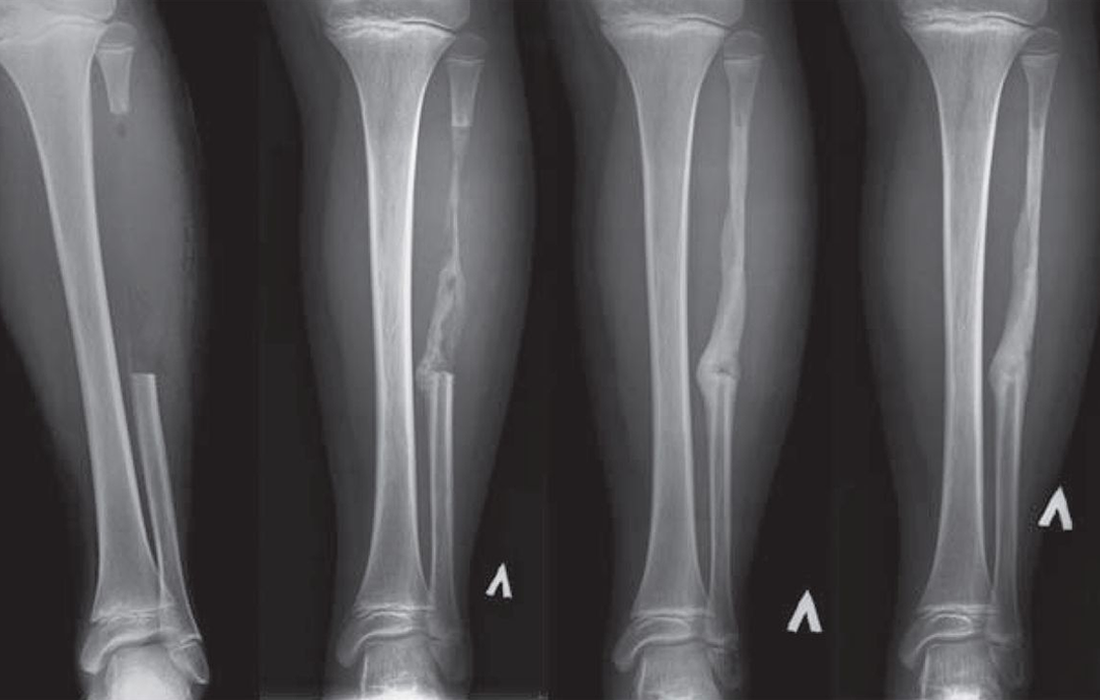Regenerative Medicine News and General Information
New Method to Promote Bone Growth
Over the past few decades, the development of smart multifunctional biomaterials with the ability to control the behavior of stem cells on demand has become a powerful strategy in regenerative medicine and cell therapies. For instance, such stem cell-based therapies bear new chances to regenerate critical size bone defects from severe fractures or bone tissue loss after surgery.
The osteogenic differentiation of mesenchymal stem cells is important for the healing of bone fractures and osteogenic diseases such as disorders of bone metabolism (osteoporosis).
However, when it comes to complicated fractures or major tissue loss, even a bone’s self-healing power is insufficient,implants are needed to stabilize the bone, replace parts of joints, or bridge larger defects with degradable materials.
Mesenchymal stem cells are capable of generating different types of tissue, however activating them to specifically regenerate bone can be particularly challenging. In such cases, an extracellular matrix plays a crucial role.
This ensures that implants are incorporated better and are less likely to be rejected by the body. Drugs and activators can also be added to the artificial extracellular matrix to stimulate bone growth. One such activator is the protein BMP-2, which is already being used in spinal fusions or to treat complicated, non-healing fractures. However, studies have shown that the high dose of BMP-2 needed can lead to uncontrolled bone tissue formation in the surrounding muscle as well as to other undesirable side effects.
DNA can help to stimulate bone healing in a localized and targeted manner
The researchers from Halle, Leipzig and Aveiro are therefore proposing a procedure that stimulates stem cells in a more targeted way and causes significantly fewer side effects. One thing they are focusing on is enhancing the design of the extracellular matrix. They use a special layer-by-layer technology to apply the biomaterial to the implant. This enables them to control its composition, structure and properties at the nano level.
This design at the nano level is needed to functionalise the biomaterial; here they are leaning on the expertise of colleague Dr Christian Wölk from Leipzig. Instead of incorporating large amounts of BMP-2 directly into the biofilm and risking an uncontrolled release, he packages DNA fragments into lipid nanoparticles that act as transport containers. Only after the implant has been inserted does the DNA migrate into the cells of the bone tissue and stimulate them to produce BMP-2. This, in turn, activates the bone-forming stem cells.
DNA can be released in a targeted manner and limits the stimulation of tissue growth with respect to time and location, without causing undesirable side effects.
According to Groth, the method is also fundamentally suited for transporting mRNA and thus expands the possibilities of regenerative medicine, not only in the field of bone formation, but also for other therapeutic applications.
SOURCE:
Catharina Husteden, Yazmin A. Brito Barrera, Sophia Tegtmeyer, João Borges, Julia Giselbrecht, Matthias Menzel, Andreas Langner, João F. Mano, Christian E. H. Schmelzer, Christian Wölk, Thomas Groth. Lipoplex‐Functionalized Thin‐Film Surface Coating Based on Extracellular Matrix Components as Local Gene Delivery System to Control Osteogenic Stem Cell Differentiation. Advanced Healthcare Materials, November 15, 2022; 2201978 DOI: 10.1002/adhm.202201978
IMAGE:
https://www.cmaj.ca/content/cmaj/192/32/E920/F1.large.jpg

